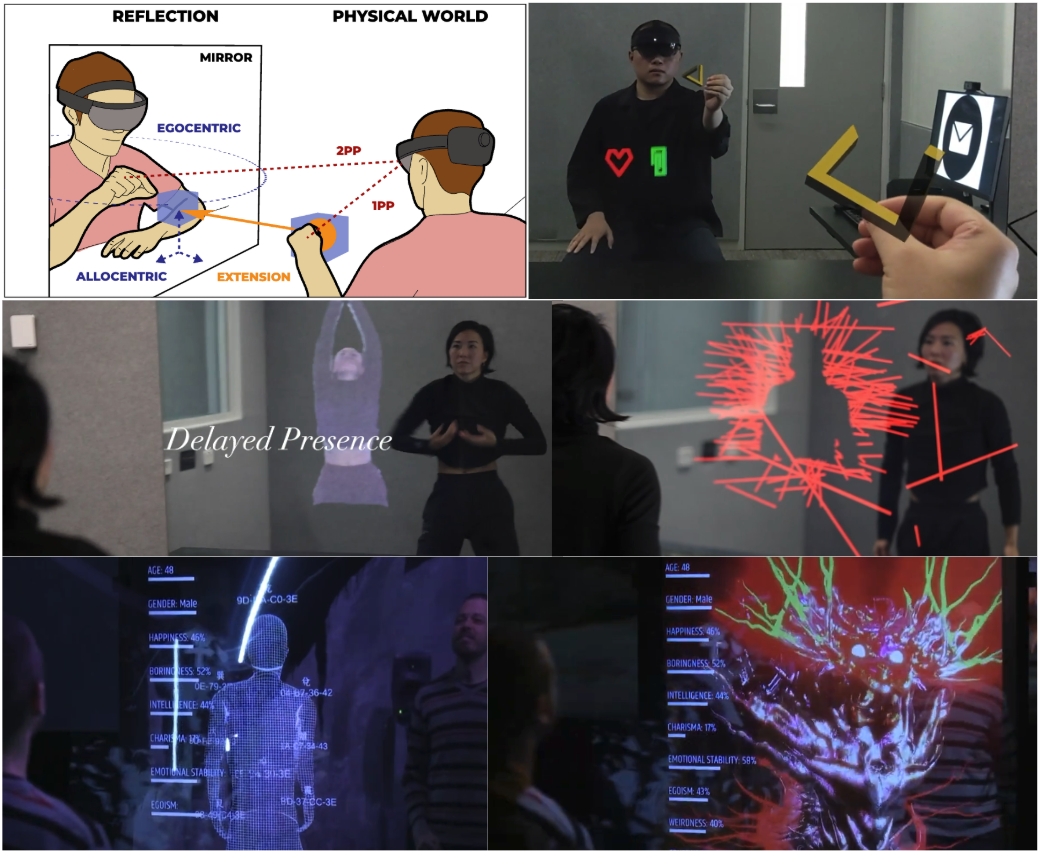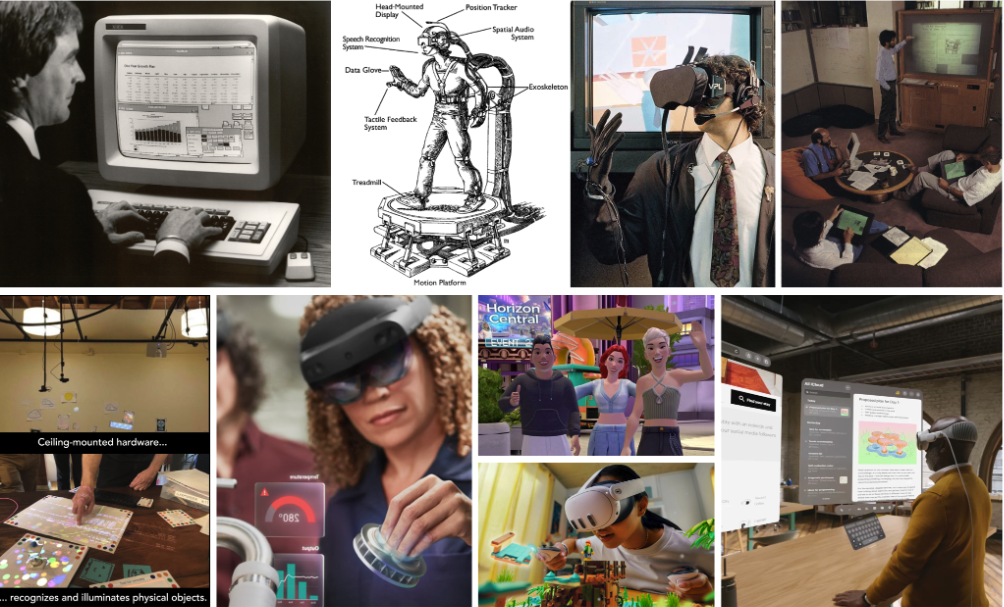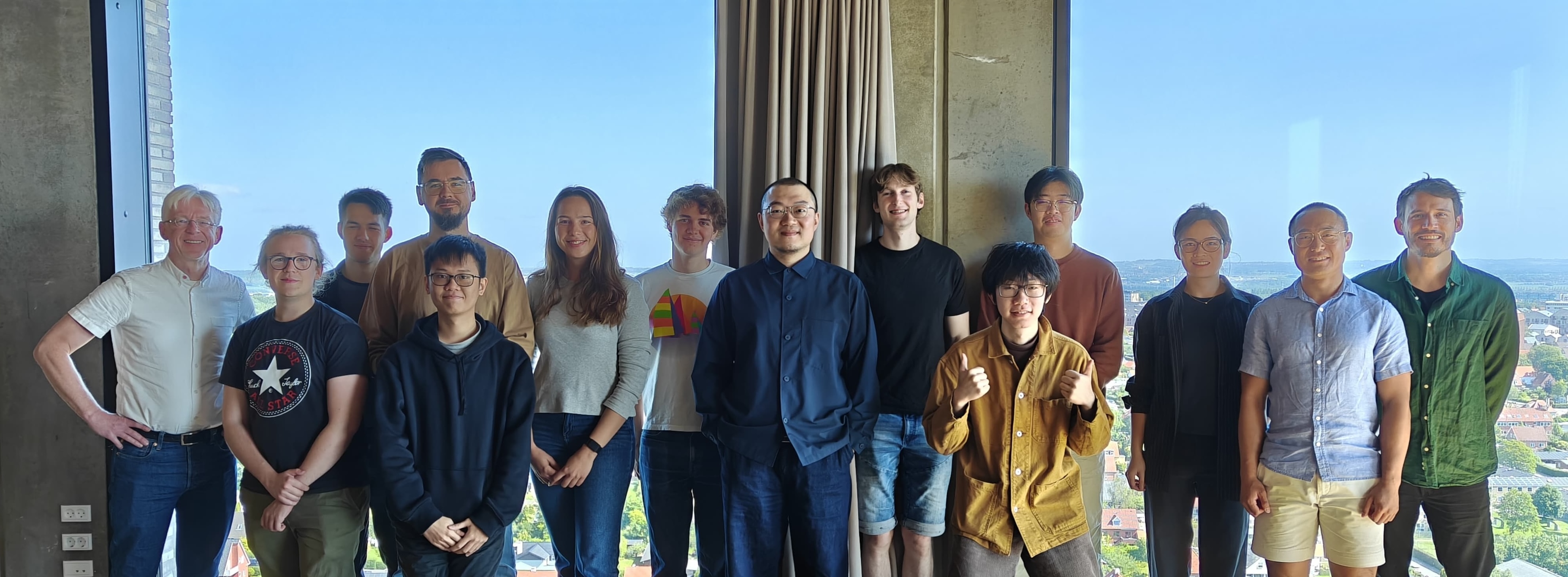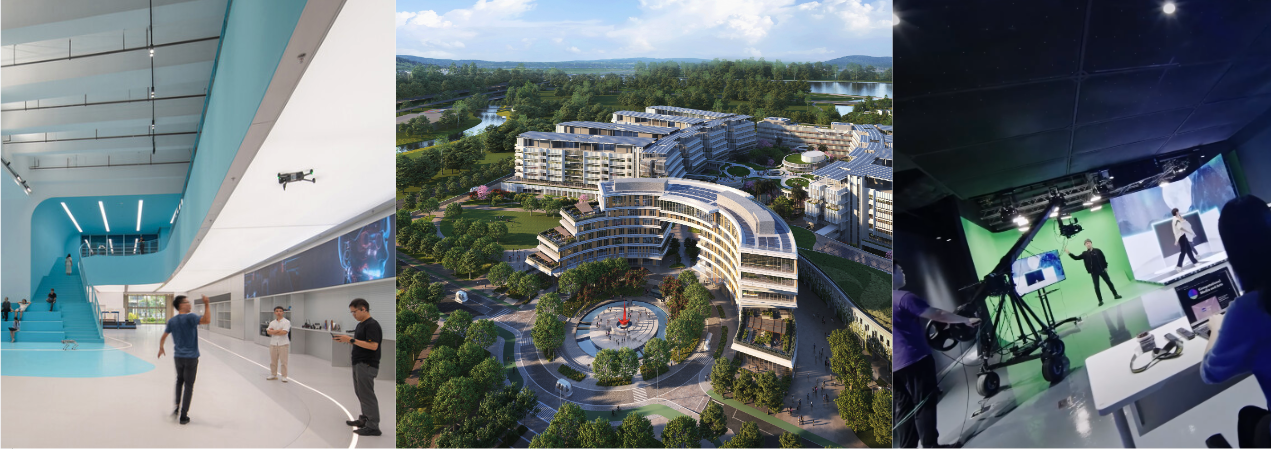From October 2025, I will join HKUST(GZ) as a Tenure-Track Assistant Professor affiliated with Thrust of Computational Media and Arts (CMA) and Thrust of Internet of Things (IoT) of the Information Hub. I have multiple open PhD positions along with Research Assistant and Postdoc opportunities for applicants at varying stages of study. I am also looking to advise group and individual MPhil research projects. Potential topics include:
- Interaction Techniques for Next-Gen XR Devices
- Novel Interaction Combining XR and IoT Devices
- AI-assisted Interaction with XR Mirrors
- Theoretical and Historical Reflections on Interaction Design Concepts
Requirements
For all positions, I am looking for self-motivated applicants with strong drive for excellence. Some combinations of the following traits are desired:
- An educational background that makes you confident for the position
- Strong technical skills, including but not limited to XR Development in Unity, Motion Capture, Computer Vision, Arduino, and Digital Fabrication
- Basic understanding of the current research/industry landscape of HCI/XR
- Good command of English for academic writing and communication
- Interest in theoretical and conceptual thinking regarding interaction design and the use and development of computing technology
If you are interested, please reach out at qiushizhou [at] outlook.com with:
- Your CV
- Your publications or latest thesis
- Your transcripts from your current or most recent degree
- A short description of how your skillset/experience matches my interests
- A short description of your proposed research topic(s)
Research Topics
While the following topics show some of my immediate research interests, they can only work if they become tailored for the right candidate. We will discuss and determine together the detailed directions within a generic frame, according to your skills and experience. The topics are not mutually-exclusive, on the contrary, you are encouraged to demonstrate your interest and capability in working across these domains. Note that the reading material for each topic is not mandatory by any means, they are only indications of the types of work and sources of inspirations.

Interaction Techniques for Next-Gen XR Devices

My latest postdoctoral research has contributed to an award-winning team that pioneers foundational input methods and interaction guidelines for XR operating systems, including the latest Apple Vision Pro and Android XR. Our research output has been mostly on eye+hand interaction with a prototyping-based interaction design and engineering process. These works rely on our knowledge around the nature of gaze fixations and saccades, patterns of eye-hand coordination, and the metaphors of input that users are familiar with from using previous technologies, such as mouse and touchscreen.
Continuing this line of research, you will explore interaction techniques for future XR devices. While we have seen the development in the capabilities of many novel input modalities inculding gaze, gestures, and even brain-computer interface, I believe that the “winner” technique that will be adopted in the future can only be discovered with the consideration of the past and current uses of interactive technologies. In this project, we will collaboratively brainstorm, design, and develop novel input techniques for future XR devices by incorporating empirical knowledge on human cognition and behaviour with past experiences in the design and engineering of input devices and techniques. Ideally, you are someone who enjoys reading the following papers and articles and are eager to apply these thinking in practice. Together, our research will yield immediate real-world impact and inform industry to benefit current and future users.
Reading Material
- 3D User Interfaces
- Eye-Hand Symbiosis
- Input Technologies and Techniques
- A Three-State Model of Graphical Input
- Integrality and Separability of Input Devices
- Sensorimotor Regularities for Superpower Interactions in MR
- Direct Manipulation for Distant Objects Through Gaze-based Summoning
Novel Interaction Combining XR and IoT Devices

I believe that the future of XR lies in its capability of augmenting and modifying the experience with the physical reality instead of hiding it. However, because the development of XR has been mostly driven by VR, little consistent effort was made to re-design the physical reality to make it work with XR. At the same time, other previous works that are not typically considered as part of the XR field, such as UbiComp, Dynamicland, and Proxemic Interaction, have accumulated insights in how to embed interactive capabilities with computing in the domestic physical spaces. These insights set the stage for re-thinking the physical reality in the context of XR.
In this project, you will explore novel interaction affordances by combining the capabilities of the XR interface and the opportunities of re-designing the physical reality in an IoT context. For instance, you may explore novel uses of the position and movement of the XR-wearing body and its immediate peripersonal space among the extrapersonal space that is computationally defined by “smart” objects equipped with sensors and actuators, together in the domestic space that is full of apparent and hidden significations, rules, functions, and habits. Through physical and robot programming, we can demonstrate novel interaction affordances and concepts of XR x IoT that contribute interaction design principles and frameworks in this direction.
Reading Material
- Dynamicland
- The intelligent use of space
- The Computer for the 21st Century
- Proxemic Interactions: The New Ubicomp?
- 论家用电器 / On Electronic Household Appliances
- Assisting MoCap-Based Teleoperation of Robot Arm using AR Visualisations
AI-assisted Interaction with XR Mirrors

Easily found in most domestic and public spaces, mirrors are strange objects that afford a specific type of interaction, as the goal is typically seeing oneself. This specificity in the context of its use simplifies the task of recognsing user intention and action, and allows us to design richer interaction capabilities with mirrors. After my PhD research on designing novel interaction with mirrors in XR, I am interested in exploring opportunities of enriching the interaction with mirrors using AI.
In this project, we will explore ways of integrating the AI capabilities, including LLM and generative models, into the interactive experience with mirrors beyond the typical conversational-agent or heads-up-display approaches. Starting from a more substantial understanding of the relationship between the user and their reflected image, we will identify opportunities to augment/modify this experience through visual medium, with XR headsets and/or smart mirrors. Together, we will design and build cool prototypes that can be used in research and art projects.
Reading Material
- Reflected Reality: Augmented Reality through the Mirror
- Here and Now: Creating Improvisational Dance Movements with an MR Mirror
- Movement Guidance using a Mixed Reality Mirror
- Biometric Mirror
Theoretical and Historical Reflections on Interaction Design Concepts
 I believe that HCI research can benefit from theoretical thinking, including cultural, media, cognitive, and social theories, as well as philosophy of technology. Embodied interaction (built on phenomenology) and instrumental interaction (built on cognitive theories of tool use) are great examples where new theoretical perspectives were brought into HCI and had profound impact on the field afterwards. Whereas we can find this type of work more regularly in the past, they have become scarce in recent years due to the waves of craze over new technical hypes every two months, which I think is precisely the reason why we need more theoretical thinking that grounds our understandings of HCI phenomena in the broader context of history.
I believe that HCI research can benefit from theoretical thinking, including cultural, media, cognitive, and social theories, as well as philosophy of technology. Embodied interaction (built on phenomenology) and instrumental interaction (built on cognitive theories of tool use) are great examples where new theoretical perspectives were brought into HCI and had profound impact on the field afterwards. Whereas we can find this type of work more regularly in the past, they have become scarce in recent years due to the waves of craze over new technical hypes every two months, which I think is precisely the reason why we need more theoretical thinking that grounds our understandings of HCI phenomena in the broader context of history.
An example from my ongoing work in this direction is combining theoretical lenses of activity theory and Simondon’s philosophy of technology to provide a new perspective to understand the nature of XR interaction by revisiting its history with a focus on its dialectical development as a mediator of human use of computing carried out through artifacts of different kinds. Ideally, you are someone who would love to explore similar opportunities on related topics, and able to connect your interests in theoretical reading and thinking with HCI concepts and problems in profound ways. The forms of work that instantiate these thinking can vary, including HCI research papers, interactive prototypes, and art projects and installations.
Reading Material
- Acting with Technology: Activity Theory and Interaction Design
- On the Mode of Existence of Technical Objects
- Imagination and Invention
- Dance and Choreography in HCI: A Two-Decade Retrospective
- Instrumental interaction: an interaction model for post-WIMP interfaces
- Where the Action Is: The Foundations of Embodied Interaction
- Generative Theories of Interaction
- Metaphors We Live By
- Summa Technologiae / 技术大全
- Shaping Things
- The Question Concerning Technology in China / 论中国的技术问题
Supervision and Research Environment
 Aarhus-Lancaster GEMINI team meetup on gaze-based XR interaction (June 2025)
Aarhus-Lancaster GEMINI team meetup on gaze-based XR interaction (June 2025)
I am very lucky to have received great mentorship from my PhD and Postdoc supervisors, and I am excited to pass it along to future generations of students who are driven by curiosity to understand and make better interactive technologies. I had the pleasure of co-supervising many PhD and Master projects with academics in Europe and in Australia. As a supervisor, I take an adaptive approach to cater for students’ diverse backgrounds and skillsets, fostering an environment that maximises empowerment and growth.
 Campus and facilities of HKUST(GZ)
Campus and facilities of HKUST(GZ)
Hong Kong University of Science and Technology (HKUST) was ranked 44th by QS World University Rankings 2026, and 28th in Computer Science by Times Higher Education World University Rankings 2025. At Information Hub, you will be in a vibrant PhD community, thriving on interdisciplinary collaboration and innovation. Our state-of-the-art facilities and supportive academic network provide a fantastic environment to start your research career.
Additional Information
For detailed information on entry requirements, admission timeline, studenship, tuition fee, and else, please refer to official resources HERE.